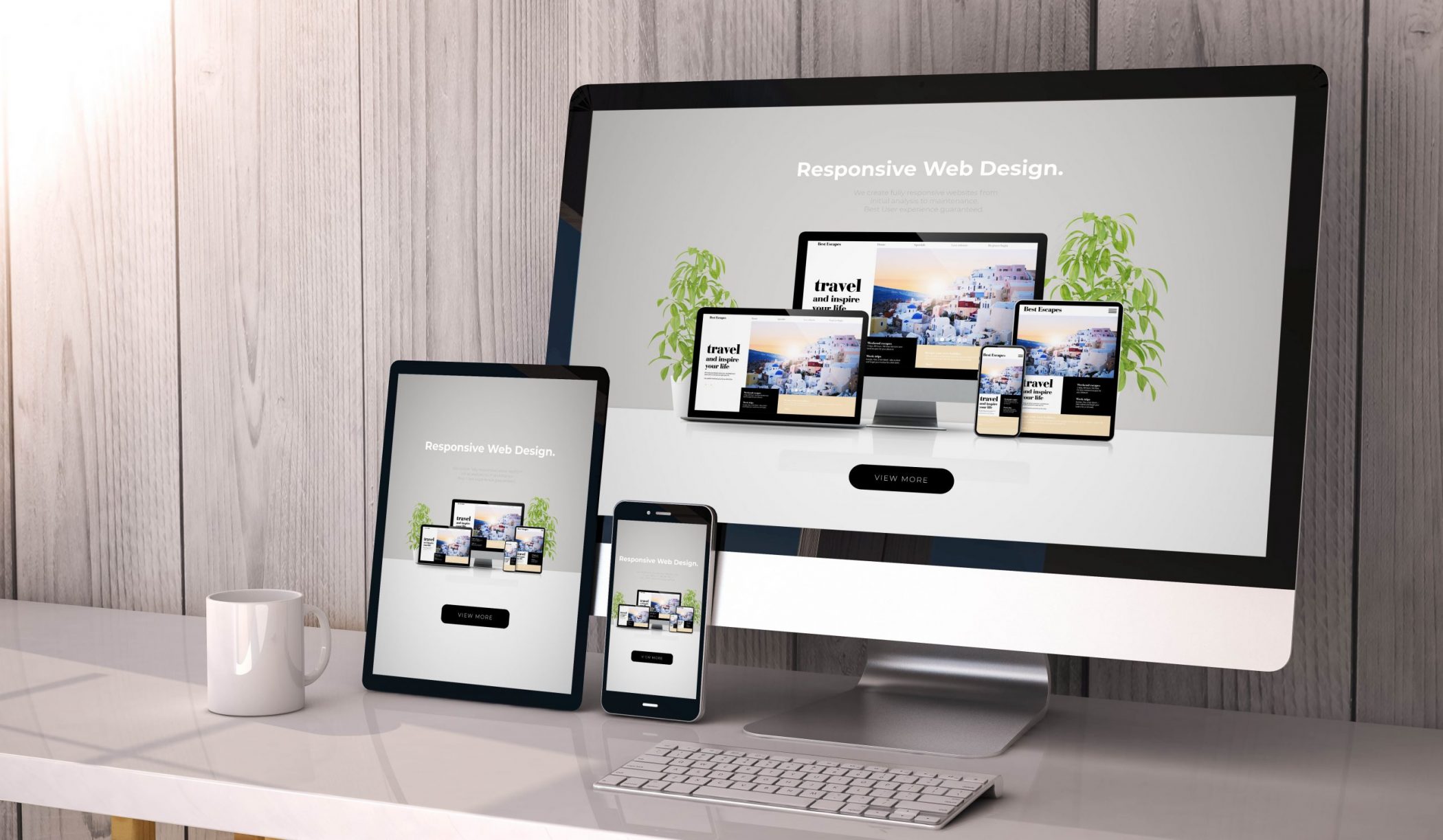The Relevance of User Experience in Efficient Web Design Approaches
User experience (UX) serves as a keystone in effective web design techniques. It forms how customers connect with a website, influencing their complete satisfaction and likelihood of returning. A well-designed UX can boost involvement with intuitive navigating and receptive layouts. Ignoring these elements might lead to frustration and increased bounce rates. Recognizing the intricacies of UX is necessary for designers intending to produce engaging electronic experiences that reverberate with varied target markets. What elements truly drive successful user involvement?
Recognizing User Experience and Its Effect On Style
Although user experience (UX) is commonly viewed as a plain facet of web design, it basically shapes exactly how users engage with a site. UX encompasses all aspects of the user's communication, including functionality, ease of access, and total complete satisfaction. A favorable UX cultivates engagement, motivating individuals to check out the site and return in the future. On the other hand, an adverse experience can bring about irritation, causing high bounce prices and lost opportunities for conversion.
Design components like navigating, layout, and web content organization play critical duties in shaping this experience. Effective UX design prepares for user demands and choices, ensuring that information is visually appealing and quickly accessible. Furthermore, recognizing user actions via analytics can supply beneficial insights, informing layout choices that boost functionality. Eventually, an extensive understanding of UX enables designers to develop web sites that not just attract users however additionally promote significant interactions that align with organization goals and user expectations.
Trick Principles of Effective User Experience
Efficient user experience rests on numerous vital principles that boost web site functionality and engagement. Instinctive navigation style, receptive design fundamentals, and the significance of visual pecking order are important elements that add to a seamless communication in between users and web content. Understanding these principles permits developers to produce even more available and straightforward digital atmospheres.
Instinctive Navigating Design
Intuitive navigation layout serves as a vital entrance to their general experience when individuals run into a website. Efficient navigation enables users to easily find the information they seek, enhancing their interaction with the website. Secret concepts include clear labeling, sensible organization, and constant placement of navigation components. Labels must be simple, permitting customers to anticipate the content they will locate. A well-structured hierarchy assists users understand the relationship in between various sections, directing them with the internet site seamlessly. Furthermore, responsive menus and quickly accessible web links add to a fluid experience across gadgets. By prioritizing user-friendly navigating, designers can considerably minimize user frustration and increase engagement, ultimately promoting a favorable understanding of the web site and its material.
Responsive Layout Essentials
A well-structured navigation system naturally results in the need for a receptive layout, which is necessary in today's diverse digital landscape. A receptive layout assurances that websites feature perfectly throughout numerous devices, including tablets, mobile phones, and desktops. This adaptability improves user experience by permitting content to be aesthetically systematic and easily available, no matter screen size. Secret concepts of responsive style include liquid grids, versatile pictures, and media questions, which help with excellent viewing. Furthermore, focusing on touch-friendly elements enhances communication on smart phones. By implementing a responsive layout, developers can accommodate users' requirements, minimize bounce rates, and rise interaction. Ultimately, a well-executed responsive design promotes a positive user experience, encouraging site visitors to discover the site better.
Visual Pecking Order Significance
Visual pecking order plays a crucial role in directing customers with a web site, guaranteeing that important information captures their interest. By purposefully making use of size, spacing, shade, and comparison, designers can produce a clear path for customers to adhere to. Bigger components often draw the eye, showing their significance, while contrasting shades can highlight contact us to action. Furthermore, constant positioning and grouping of relevant web content boost understanding, making navigation instinctive. Efficient use of visual pecking order not only improves usability however additionally sustains the general aesthetic of the website, promoting a positive user experience. When users can conveniently identify the most vital info, they are most likely to involve with the content, causing boosted satisfaction and communication with the internet site.
The Role of Usability in Web Design
Functionality plays a vital role in web design, specifically through navigation simplicity and adherence to access criteria. Efficient navigating improves user contentment by permitting visitors to discover info quickly and without effort. At the same time, meeting availability standards ensures that all customers, despite their abilities, can successfully engage with the website.
Navigation Simplicity
Simplicity in navigation stands as a foundation of effective web design, greatly influencing user experience. A structured navigating system enables customers to find info swiftly and intuitively, reducing irritation and boosting complete satisfaction. Clear labeling and rational framework are crucial elements, directing users effortlessly with the internet site. Redundant web links or overly complicated food selections can disorient individuals, bring about enhanced bounce prices. Furthermore, mobile responsiveness has to be taken into consideration, ensuring navigation remains straightforward throughout gadgets. Focusing on essential pages and reducing clutter further sustains user involvement. Reliable navigating not just promotes a have a peek at this site positive experience however additionally motivates customers to explore the site much more extensively, inevitably bring about greater conversion prices. In this respect, navigating simplicity acts as a critical consider the general effectiveness of web design approaches.
Access Specifications
User engagement is greatly improved when websites stick to ease of access criteria, guaranteeing that all customers, no matter their capacities, can navigate and engage efficiently. Compliance with these criteria not just expands the target market but additionally improves general user complete satisfaction. Easily accessible design includes functions such as text choices for pictures, key-board navigation, and enough shade comparison, which assist in use by people with impairments. On top of that, carrying out these requirements can favorably impact seo (SEO) by enhancing site structure and quality. As web design progresses, prioritizing access ends up being important in cultivating an inclusive electronic atmosphere. By embracing these requirements, developers contribute to an extra equitable internet, eventually driving user commitment and engagement.
Significance of Responsive Layout for User Engagement
As consumers increasingly accessibility web sites through a variety of gadgets, the significance of receptive design becomes vital for engaging individuals properly. Responsive design assurances that a website adapts effortlessly to various display dimensions, offering an ideal viewing experience despite the tool used. This adaptability boosts user involvement by facilitating simpler navigating and communication with web content.
When customers experience a website that is receptive, they are most likely to remain much longer, discover further, and return in the future. A well-designed responsive format decreases the irritation usually connected with scrolling and zooming on smaller screens, thus minimizing bounce rates. In addition, receptive layout can favorably affect online search engine rankings, as online search engine focus on mobile-friendly web sites. In today's digital landscape, where mobile usage remains to climb, applying receptive style is not just advantageous, yet important for maintaining user interaction and guaranteeing a favorable experience across all tools.
Enhancing Load Times for Better User Complete Satisfaction

To enhance tons times, internet developers ought to prioritize enhancing photos, leveraging browser caching, and lessening HTTP demands. In addition, employing Material Distribution Networks (CDNs) can quicken content shipment by dispersing it throughout different geographic locations. Simplifying code, such as compressing CSS and JavaScript documents, additionally adds to quicker packing rates.
Ultimately, a dedication to enhancing load times not just enhances user satisfaction however also reinforces brand name commitment and enhances the chance of repeat visits. A swift, smooth experience is crucial for retaining users and fostering positive interactions.
The Influence of Visual Hierarchy on User Interaction
Visual pecking order acts as an important element in leading user communication on a site. By arranging material in a manner that prioritizes details visually, developers can affect just how customers browse and engage with a website. This power structure is developed with various layout strategies, consisting of size, spacing, comparison, and shade. As an example, larger font styles or strong shades accentuate vital aspects, such as phone calls to activity or headlines, while controlled colors and smaller typefaces can suggest subordinate details.
Reliable aesthetic pecking order helps users rapidly identify what is most essential, reducing cognitive tons and enhancing use. It permits intuitive navigating, making it less complicated for customers to find what they require without frustration. As individuals engage with an internet site, a well-structured visual hierarchy cultivates a much more gratifying experience, eventually causing greater involvement and conversion prices. Designers need to prioritize these concepts to create an user-centered and effective internet environment.
Measuring User Experience: Methods and tools

Frequently Asked Questions
Exactly How Can I Boost My Web site's User Experience on a Spending plan?
To improve a website's user experience on a budget, one can enhance page load speed, simplify navigation, apply receptive design, improve material quality, and collect user responses for continual refinements, guaranteeing a satisfying site visitor experience.
What Are Typical User Experience Errors to Prevent in Web Design?
Usual user experience errors in web design consist of cluttered layouts, bad navigation, slow packing times, absence of mobile responsiveness, overlooking availability, irregular branding, and stopping working to prioritize user feedback - agency for web design. Each can considerably prevent general website efficiency
How Commonly Should I Update My Website for Better User Experience?
Sites ought to be upgraded routinely, preferably every couple of months, to preserve optimal user experience. Frequent updates help address use problems, revitalize web content, and adjust to altering user requirements, ensuring the website stays engaging and relevant.

Can User Experience Effect SEO Rankings on My Site?
User experience can substantially influence search engine optimization rankings, as online search engine focus on web sites that supply smooth navigation, quick filling times, and interesting content. A positive user experience can cause lower bounce prices and higher search presence.
What Duty Does Ease Of Access Play in User Experience Design?
Accessibility plays a vital function in user experience layout by ensuring that all people, no matter abilities, can browse and engage with an internet site efficiently. This inclusivity enhances overall satisfaction and interaction among diverse individuals.
User experience (UX) is frequently viewed as a mere element of web design, it fundamentally forms how individuals interact with a web site. User involvement is substantially enhanced when web sites adhere to ease of access criteria, making sure that all users, no matter of their abilities, can navigate and connect efficiently. Measuring user experience (UX) is essential for understanding exactly how successfully a site satisfies the demands of its users. In addition, functionality testing, where actual users navigate the site while viewers keep in mind difficulties, offers straight comments on user experience. Typical user experience errors in web layout include chaotic designs, bad navigating, slow loading times, absence of mobile responsiveness, neglecting accessibility, inconsistent branding, and stopping working to focus on user responses.